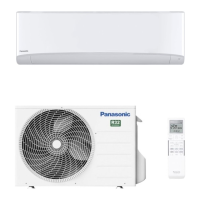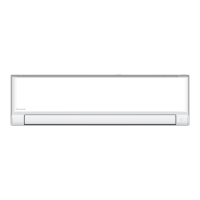Why does my room have a peculiar odor when using Panasonic Air Conditioner?
- AApril NashSep 9, 2025
A peculiar odor in the room with your Panasonic Air Conditioner may be due to a damp smell emitted by the wall, carpet, furniture, or clothing.

Why does my room have a peculiar odor when using Panasonic Air Conditioner?
A peculiar odor in the room with your Panasonic Air Conditioner may be due to a damp smell emitted by the wall, carpet, furniture, or clothing.
What causes cracking sounds during Panasonic Air Conditioner operation?
The cracking sound you hear during the operation of your Panasonic Air Conditioner is due to temperature changes causing the expansion and contraction of the unit.
What causes water flowing sound during Panasonic Air Conditioner operation?
The water flowing sound you hear during the operation of your Panasonic Air Conditioner is caused by the refrigerant flow inside the unit.
Why are some plastic parts of my Panasonic Air Conditioner discolored?
Discoloration of some plastic parts in your Panasonic Air Conditioner is subject to the material types used and is accelerated when exposed to heat, sunlight, UV light, or environmental factors.
| Cooling Capacity | 5.0 kW |
|---|---|
| Heating Capacity | 6.0 kW |
| Power Supply | 220-240 V, 50 Hz |
| Refrigerant | R32 |
| Type | Wall Mounted |
| Seasonal Energy Efficiency Ratio (SEER) | 6.1 |
| Noise Level (Outdoor) | 48 dB(A) |
Important warnings and cautions for safe operation and installation of the unit.
Warning about the use of flammable R32 refrigerant and associated fire risks.
Specific precautions for installing units with R32 refrigerant, including piping and tools.
Safety measures for refrigerating circuits and installation space requirements.
Requirements for service personnel and safety checks before commencing work.
Procedures for refrigerant leak detection and essential fire safety measures.
Checks for refrigeration equipment and electrical devices, including safety procedures.
Safety guidelines for repairs, cabling, and detecting flammable refrigerants.
Acceptable leak detection methods and procedures for refrigerant removal and evacuation.
Precautions for refrigerant charging and safe decommissioning of the unit.
Best practices for refrigerant recovery, evacuation, and equipment labelling.
List of common symptoms that do not indicate malfunction and their potential causes.
Essential checks to perform before contacting a service technician for operational issues.
Critical conditions requiring immediate consultation with an authorized dealer for safety.












